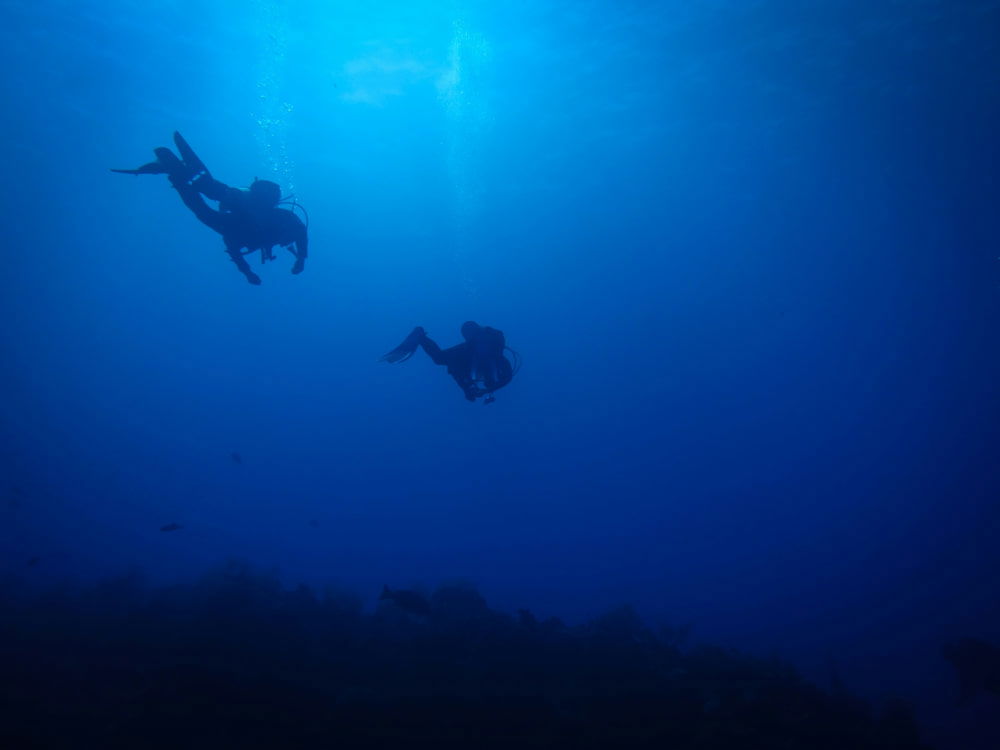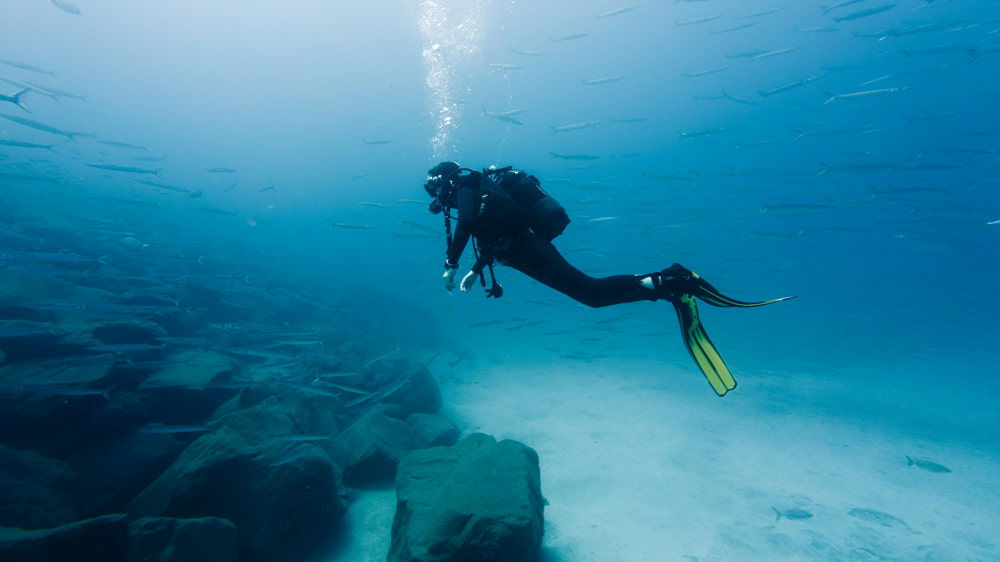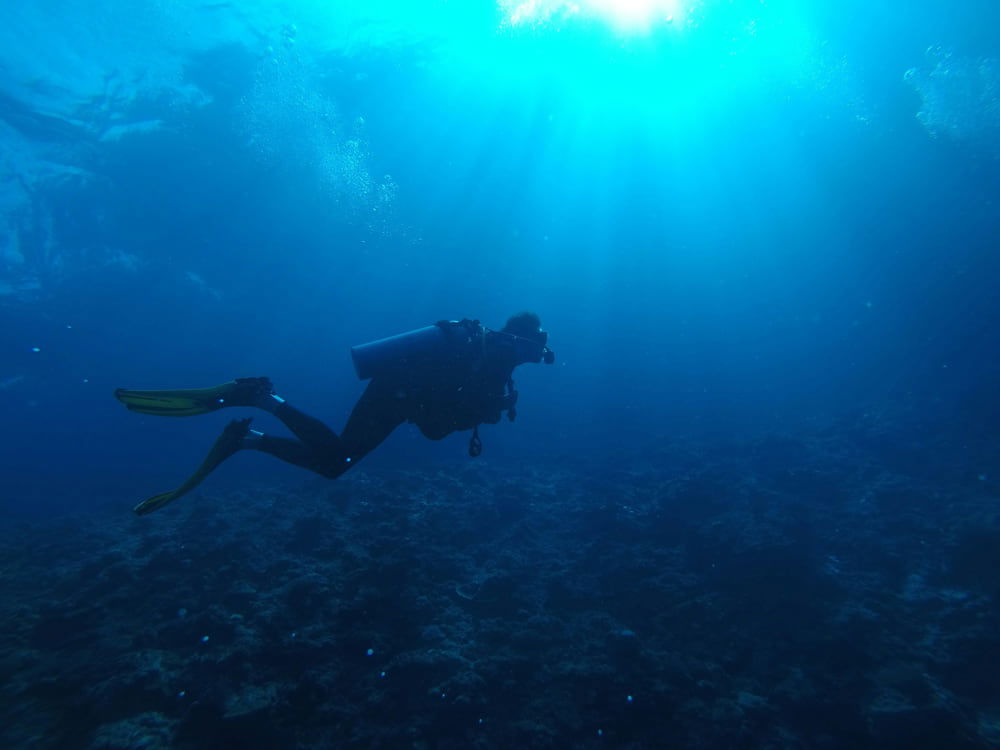It’s hard to put into words what it feels like to drift dive. That sensation of letting go, floating effortlessly, being carried by a force bigger than you, while the vast ocean unfolds before your eyes—it’s something truly special.
Drift diving isn’t just thrilling—it can offer some of the most unforgettable dives of your life. But only if you know how to handle it properly.
Here’s a practical guide so you don’t end up tumbling around like a sock in the washing machine, and instead, learn how to make the most of those moving waters.
Contents
What is drift diving?
Drift diving is a type of dive (or sometimes just a condition at a certain site) where the key idea is letting the current carry you. It has a few important implications:
- You won’t be kicking much—the current does the work.
- It requires careful planning—you’ll need to surface at a specific point in the direction of the current.
- It’s a chance to just float and watch the underwater world pass by like a living, breathing panorama.
Sounds relaxing, right? It can be. But it can also get chaotic if you’re not prepared. That’s why knowledge and preparation are everything when it comes to drift diving.
Types of currents you might encounter

Not all currents are created equal. Knowing the difference could save you from a stressful situation:
Surface vs. deep currents
Surface currents are usually found in the first few meters of your dive. They’re influenced by wind and tides and are generally more predictable.
Deep currents, on the other hand, can be colder, stronger, and less obvious. If you find yourself being pulled downward, stay calm, control your buoyancy, and assess whether it’s safe to continue or better to ascend.
Horizontal vs. vertical currents
Horizontal currents are what most people imagine: like being on an underwater conveyor belt.
Vertical currents, however, push you up or down—and can be tricky. The golden rule here? Never fight a vertical current. Focus on controlled breathing and alert your buddy if you feel sudden changes.
Drift diving (the classic version)
This is what most divers refer to when they talk about currents: you jump in, let the current take you, and the boat picks you up later. It’s convenient, fun, and lets you cover a lot of reef without kicking much.
But—you need solid coordination with the surface team. Surfacing 2 kilometers from the boat is not the kind of adventure anyone’s looking for.
Essential gear for drift diving
You don’t need to gear up like a tech diver, but a few essentials will go a long way:
- SMB or DSMB (Surface Marker Buoy): So the boat knows where to find you.
- Reef hook or current hook: To stay put without using up your air or energy.
- Whistle or shaker: To signal your buddy or guide if you get separated.
- Reel: Handy for deploying your SMB from depth.
- Powerful fins: Optional, but helpful for better control and maneuverability.
Common mistakes (and how to avoid them)

Learning from other divers’ mistakes is way better than making them yourself. Watch out for these:
- Not checking sea conditions beforehand: Currents are usually predictable—check the forecast and always be alert for sudden changes.
- Getting separated from the group: It happens fast. One quick pause to admire a coral or follow a nudibranch, and suddenly you’re alone. Stay close to your buddy and guide.
- Skipping the surface marker: We’ve said it before, but it bears repeating: never dive without an SMB.
- Panicking when the current kicks in: Stay calm, breathe deeply, and stick to the dive plan.
- Losing control of your ascent/descent: This is often due to poor buoyancy control. Practice makes perfect!
Tips from DPM Diving instructors
Our instructors have tackled some of the most epic currents around—from Indonesia to Thailand to Mexico. Here’s their gold-standard advice:
- Have a solid dive plan: Before jumping in, make sure you understand the dive site and what to expect. Ask questions!
- Trust your guide: If you’re diving with DPM, you’re in good hands. Let our experience guide you.
- Master your buoyancy beforehand: It’s the foundation of every great dive, especially in moving water.
- Don’t try to control the current: You can’t. Learn to go with the flow.
- Soak in the scenery: Drift dives often bring out the big stuff—manta rays, sharks, pelagic fish. Don’t miss the magic!
So there you have it—drift diving isn’t just for seasoned pros, but it does require preparation and respect. With the right gear, the right attitude, and some guidance from the experts, it might just become one of your favorite underwater adventures.
Ready to go with the flow?









0 Comments